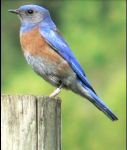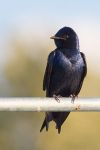It’s been a while since we’ve done a birding quiz. Let’s see how you do! Answers to these questions are found somewhere else in the Pinewood News.
- What birds have a large nest on the top of a dead pine tree near Lake Odell? Turkey Vulture, Osprey, American Kestral, Common Raven. Hint: They catch and eat fish.
- Which Goldfinch species is common in Munds Park? American Goldfinch, Lesser Goldfinch, Lawrence’s Goldfinch, Coconino Goldfinch?
- When a group of Turkey Vultures are soaring in the sky, what do ornithologists call them? Cast, Committee, Meal, Vortex, or Wake.
- Which finch has not been sighted in Munds Park (at least to my knowledge?) Black Rosy-Finch, House Finch, Cassin’s Finch.
- When is the least favorable time to be bird watching? Morning, High Noon, Late Afternoon.
- Are Acorn Woodpeckers best described as being: Communal or Solitary?
- What blackbird is not common to Munds Park? Lone-Pine Blackbird, Red-Winged Blackbird, Yellow-Headed Blackbird?
- What bird is often thought to be a duck, but is not? Mallard, American Coot, Blue-winged Teal
- About how many times a minute does a hummingbird’s heart beat? 400, 600, 1200.
- What is one of the easiest and cheapest ways to attract birds to your property? Cracked corn, green ham and eggs, dripping water into a bird bath, rock music played over back-yard speakers.
- What are the primary colors of a male Western Tanager? Gray and Black; Red and Black; Red, Yellow, and Black; Brown and Blue
- Which grosbeak is found regularly in Munds Park? Black-Headed Grosbeak, Blue Grosbeak, or Steller’s Grosbeak?
- What would be a favorite food of a Pygmy Nuthatch? Unshelled peanuts; nyger seed; black-oil sunflower seeds.
- Where do Western Bluebirds nest? In a triangular configuration of branches in a Ponderosa Pine; On the ground near a source of water; In a cavity such as in a tree or nest box; Under the eaves above your deck.
- Which swallow species has a long forked tail? Purple Martin; Barn Swallow; Blue-Green Swallow; Tree Swallow.
Answers:
- Osprey
- Lesser Goldfinch
- All of the choices
- Black Rosy-Finch
- High Noon
- Communal
- Lone-Pine Blackbird (I made that name up)
- American Coot
- 1200
- Dripping water into a bird bath
- Red, Yellow, and Black
- Black-Headed Grosbeak
- Black-oil sunflower seeds
- In a cavity such as in a tree or nest box
- Barn Swallow



